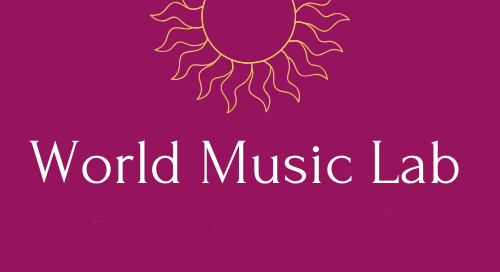World Music Lab 🐸 DIRECT-TO-FAN #2
Beyond the Digital Realm: Offline Strategies for Independent Music Artists in 2025 !
🌟 Hello!
In our previous article, we explored the potential of digital platforms for independent music artists to establish direct relationships with their supporters, much like the Community-Supported Agriculture (CSA) model in the food industry. While online platforms are essential, offline engagement remains a powerful way to create deep, lasting connections with audiences, patrons, and communities.
This article delves into the offline potential targets that independent artists and local music communities can leverage to sustain and grow their careers beyond digital interactions.
✅Local Communities and Cultural Organizations
Many communities have cultural centers, libraries, and local arts councils that actively seek partnerships with musicians. These institutions often provide opportunities for performances, workshops, and artist residencies. Collaborating with these entities can strengthen an artist’s local presence and offer financial support through grants and paid engagements.
✅Independent Venues and Alternative Performance Spaces
Beyond traditional music venues, artists can explore alternative spaces such as art galleries, bookstores, cafés, and co-working spaces that host live events. Pop-up concerts in unconventional settings—such as rooftops, museums, or historical sites—can create unique experiences that draw dedicated audiences.
✅House Concert Networks
House concerts offer an intimate setting where artists can connect directly with fans in a personal way. Platforms like Sofar Sounds or artist-managed house concert networks provide avenues for musicians to perform in private homes, allowing for direct interaction with small but highly engaged audiences who are more likely to support artists financially through donations or merchandise purchases.
✅Festivals and Local Markets
Participating in regional music festivals, farmers’ markets, and craft fairs can expose artists to diverse audiences while fostering relationships with local businesses and artisans. Many independent artists have successfully integrated their music into these settings, where audiences appreciate live performances and are more inclined to purchase music and merchandise.
✅Educational Institutions and Workshops
Schools, universities, and music conservatories are valuable partners for independent musicians. Offering workshops, masterclasses, or guest lectures can generate income while positioning artists as educators and cultural ambassadors. Collaborations with youth programs and after-school initiatives can also provide mentorship opportunities and expand community reach.
✅Partnerships with Local Businesses
Establishing partnerships with local businesses, such as breweries, restaurants, or boutique shops, can lead to mutually beneficial collaborations. Some businesses host live performances as part of their customer experience, while others may support artists through sponsorships, providing financial backing or in-kind resources.
✅Artist Residencies and Retreats
Residencies at cultural institutions, retreat centers, or artist colonies can offer time and space for creative work while providing stipends or funding. These programs often come with public engagement opportunities, such as performances, discussions, or collaborative projects, further strengthening an artist’s network.
✅Fan-Organized Events and Direct Support Models
Encouraging superfans to organize offline events, such as listening parties, exclusive gatherings, or community-based showcases, can deepen audience engagement. Crowdfunding campaigns for physical projects, such as vinyl pressings or limited-edition merchandise, can also thrive through direct, offline interactions at launch events or meet-and-greets.
🐸Conclusion
While digital platforms offer crucial visibility and revenue streams, offline engagement remains a vital component of an independent artist’s career. In the article, I did not refer to street performing, which is still invaluable. Take inspiration from bands like Måneskin, whose performances on the streets of Rome propelled them onto the world stage. Beyond the music, it’s about you forging real connections and building your “community” or “circle of trust”. Don’t forget to people invite people to join your mailing list and stay connected. Prioritizing quality, authenticity, and meaningful connections is the game to play.
In the next articles, we’ll talk more about non-music networks that could be some interesting targets for music artists.
Share your experience and results in the comments! Let's help each other. 🚀
Eric
⚡️ Working together on your music. ⚡️
Check if I can help:
📚 DONE-FOR-YOU: Ask for Marketing Assistance
⚡️ DONE-WITH-YOU: Join the Music Artist Blueprint for guidance
👇 ABOUT ME: I’m Eric.
· Over 25 years of experience as a project manager and grant writer for eco-social initiatives across Europe, the Balkans, the Mediterranean, West Africa, Brazil, and Indonesia.
· More than 10 years as a booking agent specializing in folk, world, global, and jazz music artists.
· Experienced facilitator of international cooperation projects.
· Active member of the global music community, including being a WOMEXICAN and a board member of the European Folk Network.
CHECK THE MUSIC ARTIST BLUEPRINT!
Copyright (C) 2025 Music4You/World Music Lab. All rights reserved.






